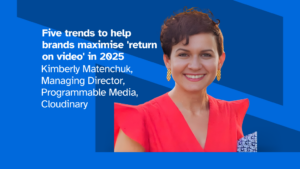New Digital Age is running a series of articles looking at the future of influencer marketing, talking to experts in the market around how the discipline will evolve over the coming year.
By Jonathan Branney, Senior Content Marketing Manager at digital marketing agency Banc
The Influencer Trend Is Here to Stay
Interest in influencer marketing is rising and shows no signs of slowing down, dramatically transforming how brands reach their customers online.
We can see this from a marketer’s perspective. Searches for information around influencer marketing have multiplied over the last few years, while from a customer POV, 80% of globally surveyed consumers said they made a purchase recommended by an influencer.
Video will be key – we know it from our own behaviour, so it’s no surprise that a recent industry report by Rakuten highlights that 64% of consumers prefer watching videos when interacting with influencer content.
Also, brands will move away from campaign thinking towards adopting long-term partnerships with influencers — driving sustained engagement and increased investment into the brand.
Influencer Networks and Marketplace
What we’re also seeing is a formalisation of influencer networks and self-serve marketplaces for influencer content, with related influencers working together in what are essentially consortia.
We can even see native platforms themselves leveraging this trend, a perfect example of this being YouTube’s Famebit. Tools such as these allow brands to develop relationships with influencers who will create and share content on their behalf, driving engagement and views for increased brand awareness and ROI.
The Emergence of the Micro-Influencer
With the rising cost of influencer marketing – and often, a lack of transparency on fees – I think brands will increasingly turn towards utilising micro-influencers as part of their strategies.
Scale and audience size aren’t everything, and marketers will look towards achieving the highest possible levels of relevance and authenticity – working with lesser-known influencers who have smaller, more niche followings and can be more closely aligned with a brand’s messaging as a result (yielding higher engagement overall).
Increased Regulation
Influencer marketing is still a relatively nascent space and isn’t yet subject to the stringent regulation faced by traditional channels.
Hardly a month goes by without a story in the press about high-profile influencers promoting questionable products and services to younger, impressionable audiences who may not as easily distinguish editorial content from adverts.
The ASA has issued guidelines for influencers, but I think we can expect to see more controls put in place as high-profile cases surrounding influencer faux pas continue to hit the news.









